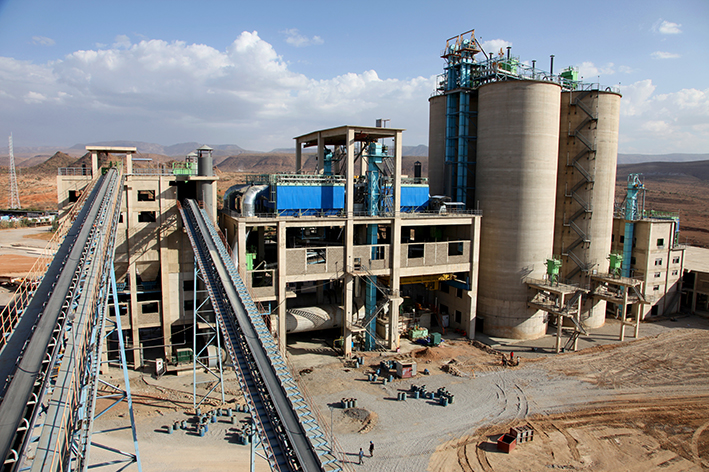With annual cement output of 75 million metric tons, Iran is among the world’s top five cement-producing countries. Unfortunately, environmental pollution is an inseparable part of cement production.
Cement manufacturing is said to cause environmental impacts at all stages of the manufacturing process. These include emissions of airborne pollutants in the form of dust, gas, noise.
The environmental issue has recently triggered authorities to clamp down on cement factories. Consequently, in a coordinated action by the Cement Industry Association and oil ministry, all cement factories across the country were required to close their cement kilns (used for producing clinker) as of January 14 for a one-month period. The measure, according to officials of the association, was aimed at preserving the quality of clinker, which has been affected by recession in the cement market.
On the occasion of the 14th international exhibition on environment, Iran Enviro 2015, which was held on February 21-24 in Tehran’s International Permanent Fair Ground with a focus on ‘green economy’, brought together industry officials to discuss cement industry’s pressing issues, Persian daily Ta’aadol reported.
Developments
Experts say the one-month suspension of cement kilns provided cement plants with a favorable opportunity to equip themselves with new equipment to prevent environmental pollution.
“The break offered an opportunity to cement factories to review their production process in light of preserving the environment,” said Ghazanfar Pirmoradi, head of the environment department at Khuzestan Cement Company.
During the suspension period, production lines underwent major overhaul, he said, citing improvement in the efficiency of filter bags used in cement factories as an example.
According to the official, emission of dust is considered to be the prime issue. “In order to reduce dust emissions, all manufacturers are now obliged to install online dust monitoring systems on their chimneys,” he said.
He went on to refer to lack of a proper sewage system as another major challenge of cement factories. “All cement factories are now required to be equipped with aerobic and anaerobic wastewater systems,” he said.
Packaging of cement was another issue discussed by authorities. Multi-layer paper sacks currently used to package and carry cement lack elasticity and due strength and hence are prone to tear. Paper sacks, Pirmoradi said, will be replaced with new environment-friendly bags.
In yet another eco-friendly move, cement factories have been required to allocate about 25-30 percent of their area to green space.
Solutions
As it was said earlier, cement cannot be produced without harming the environment. That is why environment agencies around the world are tightening their regulations on cement factories. In the United States, for example, hundreds of such companies have even been closed down. Authorities say it would be too expensive to bring them into compliance with the new rules.
It is the same, and even stricter in Europe, “where most cement plants have been closing down due to the high environmental pollution they cause,” said Hassan Soltani, manager of a cement company.
Given that cement production is a pioneering industry in Iran, Soltani described the current improvements as positive in reducing the harmful effects of producing the building material.
The Department of Environment (DoE) has now adopted a tougher approach towards cement producers violating environmental standards, he said. Accordingly, as a punishment, companies that refuse to observe these standards must pay one percent of their earning from the sale of cement – which could amount to 20 billion rials ($571,500) according to Soltani – to the government.
He added that imposing cash penalties has played a significant role in discouraging cement plants from causing further damage to the environment.


